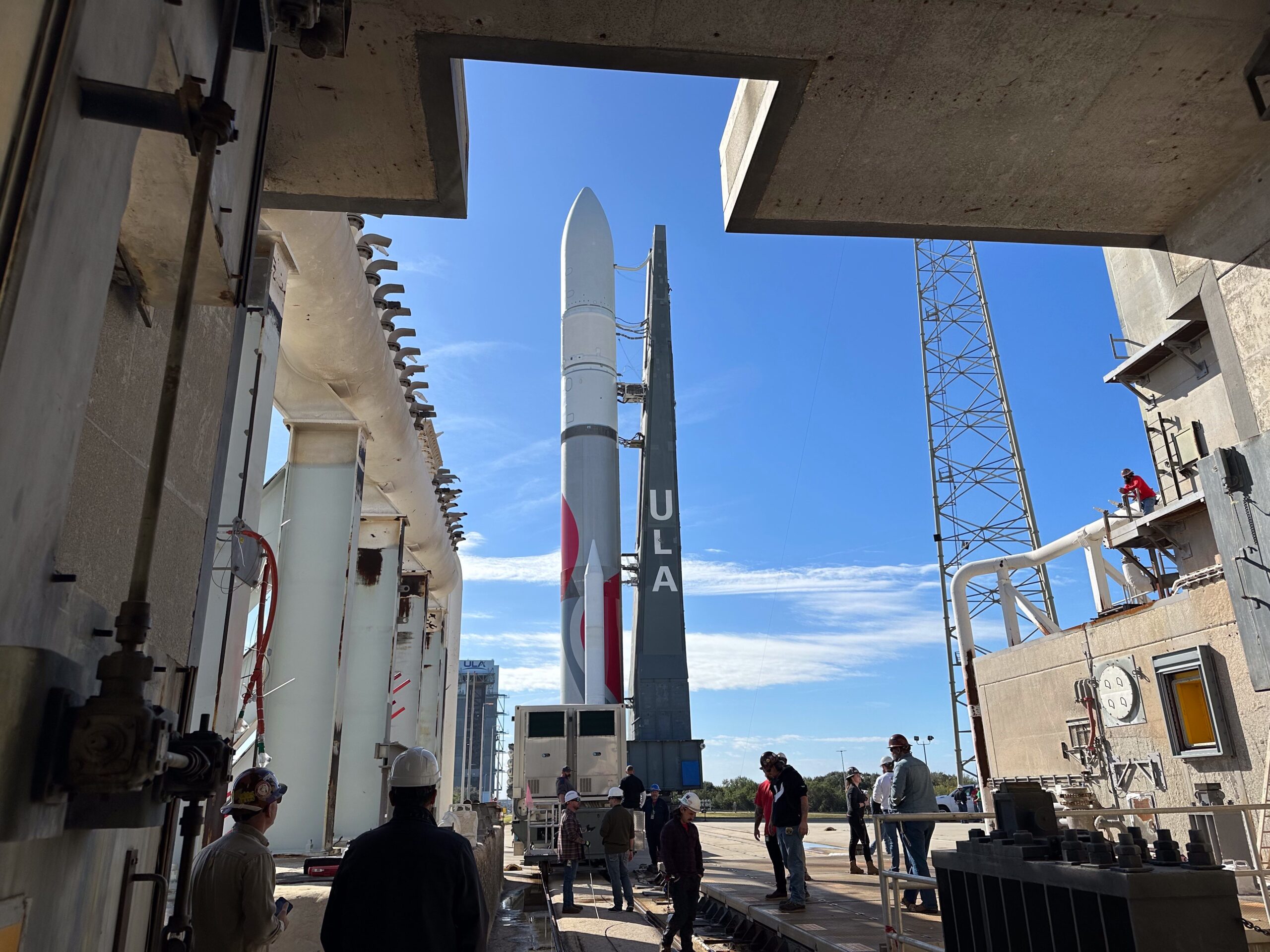
United Launch Alliance (ULA) stands primed for the maiden certification mission (Cert-1) of its Vulcan-Centaur heavylifter, whose planned liftoff early Monday, 8 January, promises an impressive fireshow of light and sound across the sleeping Space Coast. The 202-foot-tall (61-meter) behemoth will fly from Space Launch Complex (SLC)-41 at Cape Canaveral Space Force Station, Fla., at 2:18 a.m. EST, laden with Astrobotic’s Peregrine lunar lander carrying 77 pounds (35 kilograms) of customer experiments to the surface of the Moon and the “Enterprise Flight” memorial payload into deep space for Celestis, Inc.
As detailed in yesterday’s AmericaSpace story, the maiden launch of the Vulcan-Centaur—which ULA intends ultimately to replace its in-service Atlas V and soon-to-be-retired Delta IV rocket fleets—has been a decade in the making, having come to the public consciousness back in 2014. Its red-and-gray-liveried core stage is powered by a pair of Blue Origin-furnished BE-4 engines; a Centaur V upper stage with two Aerojet Rocketdyne-built RL-10 engines; and up to six Graphite Epoxy Motor (GEM)-63XL solid-fueled boosters, provided by Northrop Grumman Corp.
For Cert-1, the giant rocket will fly in its “VC2S” configuration, a clumsy letters-and-numbers nomenclature describing its Vulcan-Centaur heritage, the presence of two GEM-63XL boosters and a “standard” payload fairing. Rising from the pad under a combined impulse of 2.1 million pounds (950,000 kilograms) at T-0, the VC2S configuration can lift up to 23,800 pounds (10,800 kilograms) of payload to low-Earth orbit or 20,300 pounds (9,200 kilograms) to the International Space Station (ISS) or 7,700 pounds (3,500 kilograms) to Geosynchronous Transfer Orbit (GTO) or 5,100 pounds (2,300 kilograms) on a Translunar Injection (TLI) profile to the distance of the Moon.
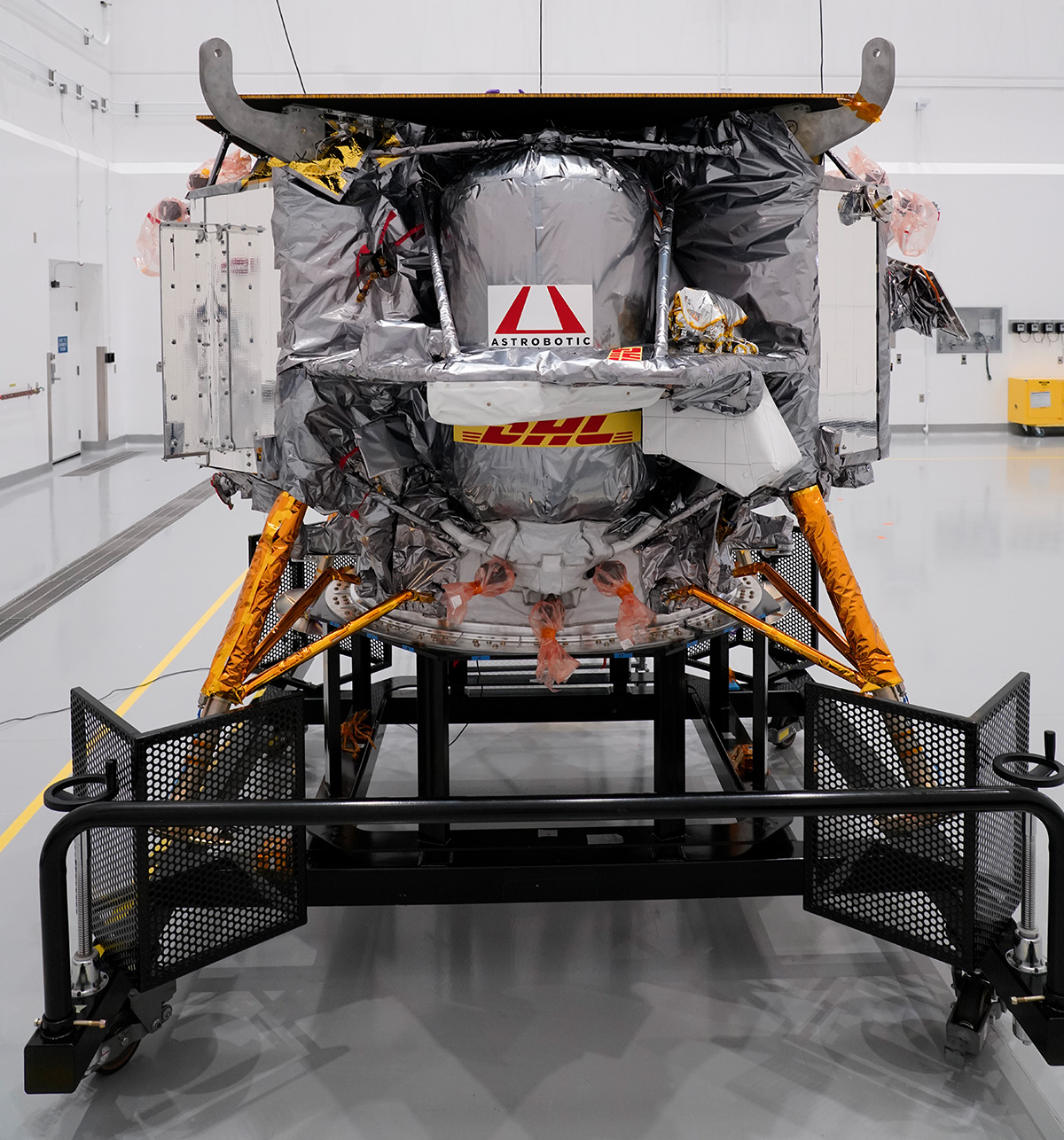
Primary payload on Cert-1 is the Peregrine lander, the launch services contract for which was signed between ULA and Pittsburgh, Penn.-based Astrobotic in July 2017, with expectations that the mission would fly aboard “a ULA launch vehicle”—Vulcan-Centaur was not mentioned at that time—in July 2019 during the 50th anniversary celebrations of the Apollo 11 lunar landing. But as Vulcan-Centaur’s development slipped inexorably to the right, launch found itself retargeted initially for no earlier than 2021 and later beyond.
In August 2019 Astrobotic confirmed that Peregrine Mission (PM)-1 would fly Vulcan-Centaur’s maiden mission. “This partnership represents a true “whole-of-government” approach to how our nation is leading the world in space,” remarked ULA CEO Tory Bruno at the time. “NASA contracted with a commercial company to land on the Moon, who then went on to contract with a commercial company for a rocket built to serve the national security space market. This highlights the power of our American system of partnership between government and industry to solve the toughest problems and the greatest of our human aspirations.”
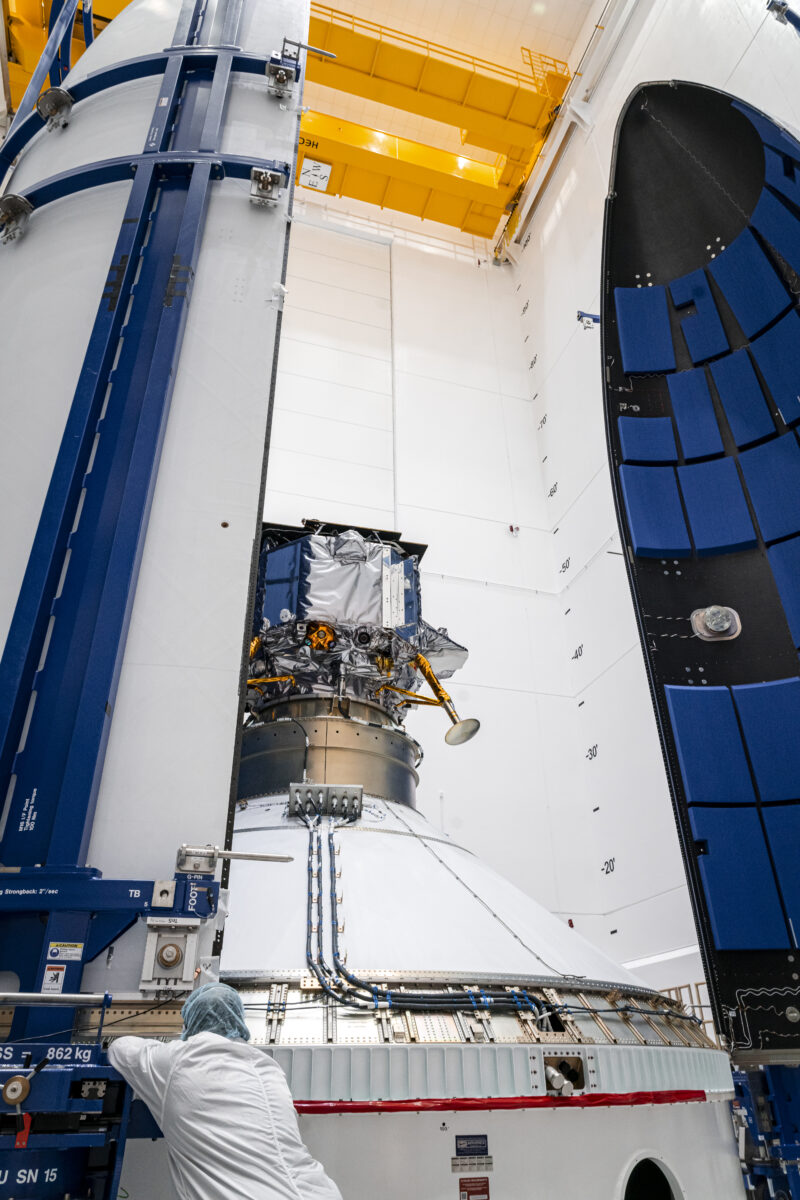
Weighing 2,830 pounds (1,280 kilograms), the four-legged Peregrine spacecraft was unveiled in 2016 as a scalable, evolvable landing vehicle and named in honor of the peregrine falcon, the most widely distributed bird of prey on Earth, which inhabits every continent save for Antarctica. “Our Peregrine lander is aptly named to represent how Astrobotic has nimbly adapted to the many challenges and changing landscapes of the space sector,” said Astrobotic CEO John Thornton. “This design tells our PM-1 story every time it’s sewn onto a jacket or projected onto a screen.”
In November 2018, Astrobotic was one of nine U.S. companies selected to bid on NASA payload delivery services to the Moon under the Commercial Lunar Payload Services (CLPS) program. Six months later, it was awarded a $79.5 million contract to fly as many as 14 scientific and commercial payloads to Lacus Mortis (“Lake of Death”), a hexagonal patch of basaltic lava flow on the Moon’s near side. That site was later shifted to Sinus Viscositatis (“Bay of Stickiness”) just outside of Gruithuisen Domes, a set of large, non-basaltic domes on the northeastern border of Oceanus Procellarum (“Ocean of Storms”).
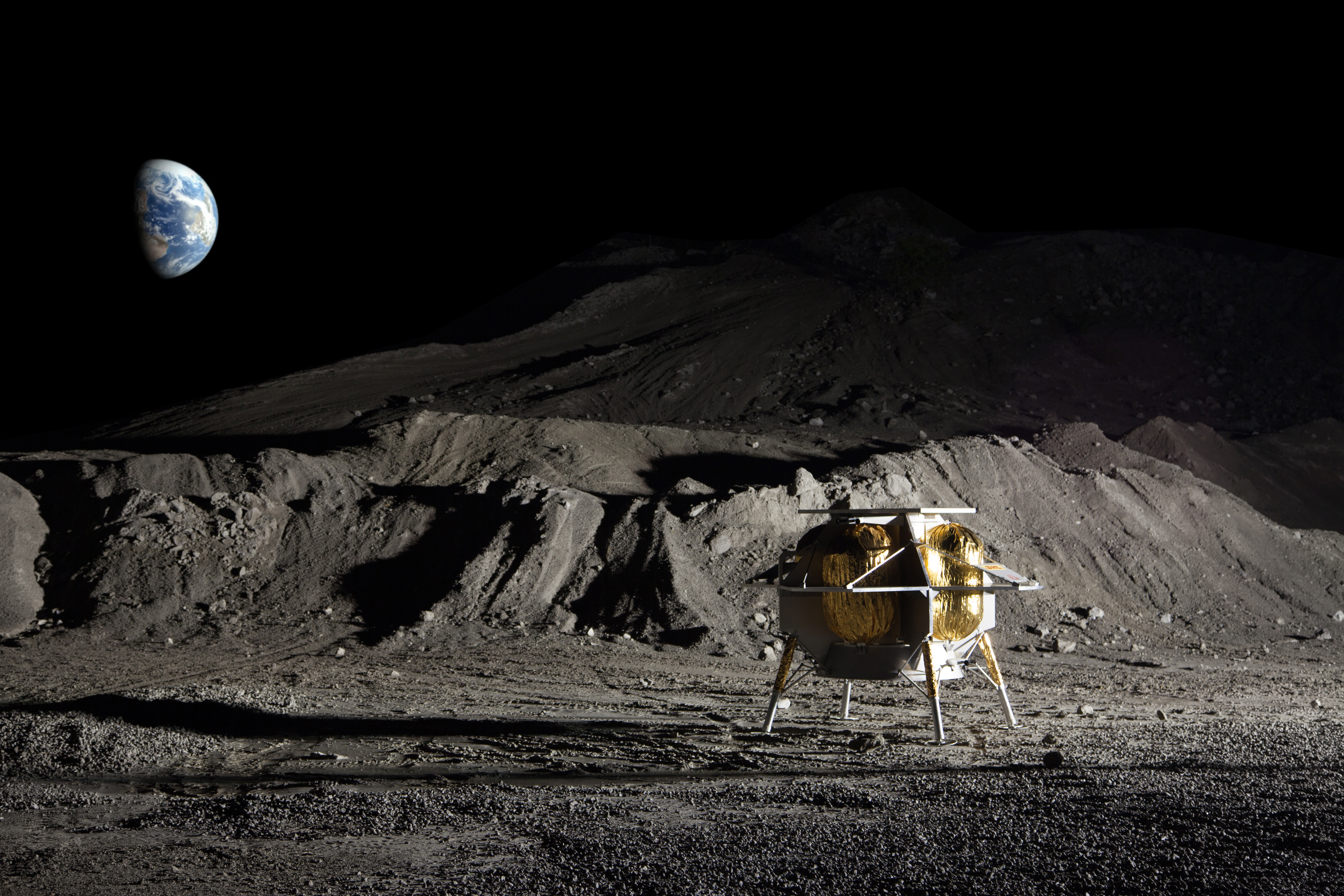
But as Vulcan-Centaur’s Cert-1 mission slipped regularly to the right, Peregrine found itself similarly delayed in tight lockstep. For this mission, the lander will carry 21 scientific payloads from seven sovereign nations, including six from NASA.
The Linear Energy Transfer Spectrometer (LETS), from the Johnson Space Center (JSC) in Houston, Texas, will assess the radiation environment on the lunar surface. The Ames Research Center (ARC) in Mountain View, Calif., has supplied the Near Infrared Volatile Spectrometer System (NIRVSS) to will examine surface and subsurface hydration and morphology and the Neutron Spectrometer System (NSS) to characterize hydrogen-bearing minerals and regolith composition.
The Goddard Space Flight Center (GSFC) in Greenbelt, Md., has provided the Peregrine Ion-Trap Mass Spectrometer (PITMS) to measure the lunar exosphere during descent and landing and the Laser Retroreflector Array (LRA) to facilitate extremely precise laser-ranging applications. And the Langley Research Center (LaRC) in Hampton, Va., has supplied a Navigation Doppler Lidar (NDL) to determine Peregrine’s approach and landing profile towards landing on the Moon with great precision.
The other 15 payloads are from the United States, Germany, Mexico, Japan, Hungary, the Seychelles and the United Kingdom. They include the first Latin American scientific instrument ever to head to the Moon’s surface, several “time capsules”, including one from Japan with messages from 80,000 children and DHL’s “Moonbox”, containing photographs, novels, students’ work and a piece of Mount Everest, physical samples of bitcoin, memorials from the Celestis and Elysium “space burial” organizations and a Hungarian Memory of Mankind (MoM) plaque with archival imagery and miniaturized texts.
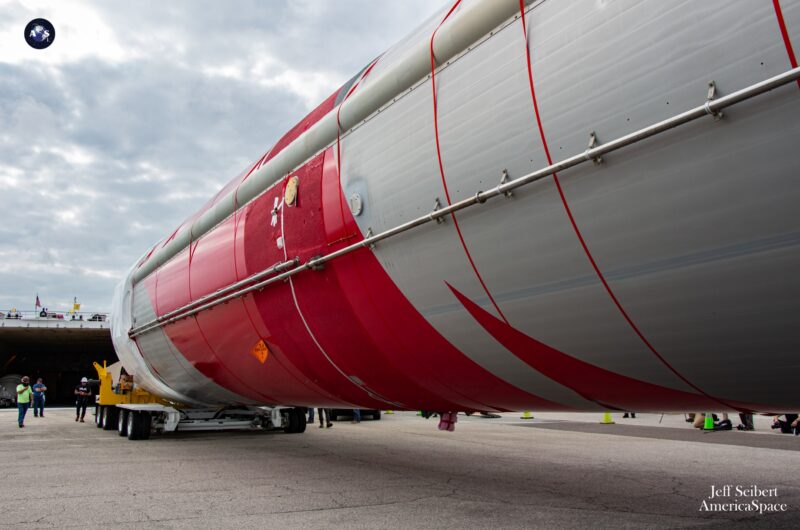
Notably, Astrobotic is providing a standalone Terrain Relative Navigation (TRN) sensor with an unparalleled level of accuracy on the order of 300 feet (100 meters) or less). And Carnegie Mellon University’s shoebox-sized Iris rover is aboard: this tiny, 4.4-pound (2-kilogram) craft will mark the first wheeled U.S. robotic craft ever to land on the Moon. It will also be the smallest and lightest rover to date, tasked with geological imaging and the gathering of ranging data for relative localization methodologies.
In January 2022, Houston, Texas-headquartered Celestis, Inc., announced its intent to fly a memorial spaceflight payload, “Enterprise Flight”, on Cert-1. Carrying more than 150 flight capsules with cremated human remains, complete-human-genome individual DNA samples and messages of greeting and goodwill from worldwide clients, Enterprise Flight would be emplaced by Centaur “on an endless journey in interplanetary space”.
It follows on the heels of 20 prior Celestis memorial flights between April 1997 and May of last year, which utilized a broad range of launch vehicles from the air-launched Pegasus-XL winged booster to SpaceX’s Falcon 9 and Falcon Heavy to deliver cremated human remains into space. Previous “space-burial” honorees included physicist Gerard O’Neill, rocket propulsion engineer Krafft Ehricke, geologist Eugene Shoemaker and former NASA astronauts Gordon Cooper, Philip Chapman and Bill Pogue. But unlike those past missions, which attained low-Earth orbit, Enterprise Flight will head into deep space, entering a stable orbit around the Sun.
The Enterprise Flight nomenclature honors the fact that this 21st Celestis payload includes the ashes or DNA samples of Star Trek creator Gene Roddenberry (1921-1991), his wife Majel Barrett Roddenberry (1932-2008), their television producer son Eugene “Rod” Roddenberry (1974-), Montgomery “Scotty” Scott actor James Doohan (1920-2005), Leonard “Bones” McCoy actor DeForest Kelley (1920-1999), visual special effects maestro Douglas Trumbull (1942-2022) and Lt. Nyota Uhura actress Nichelle Nichols (1932-2022) and her son, actor Kyle Johnson (1951-).
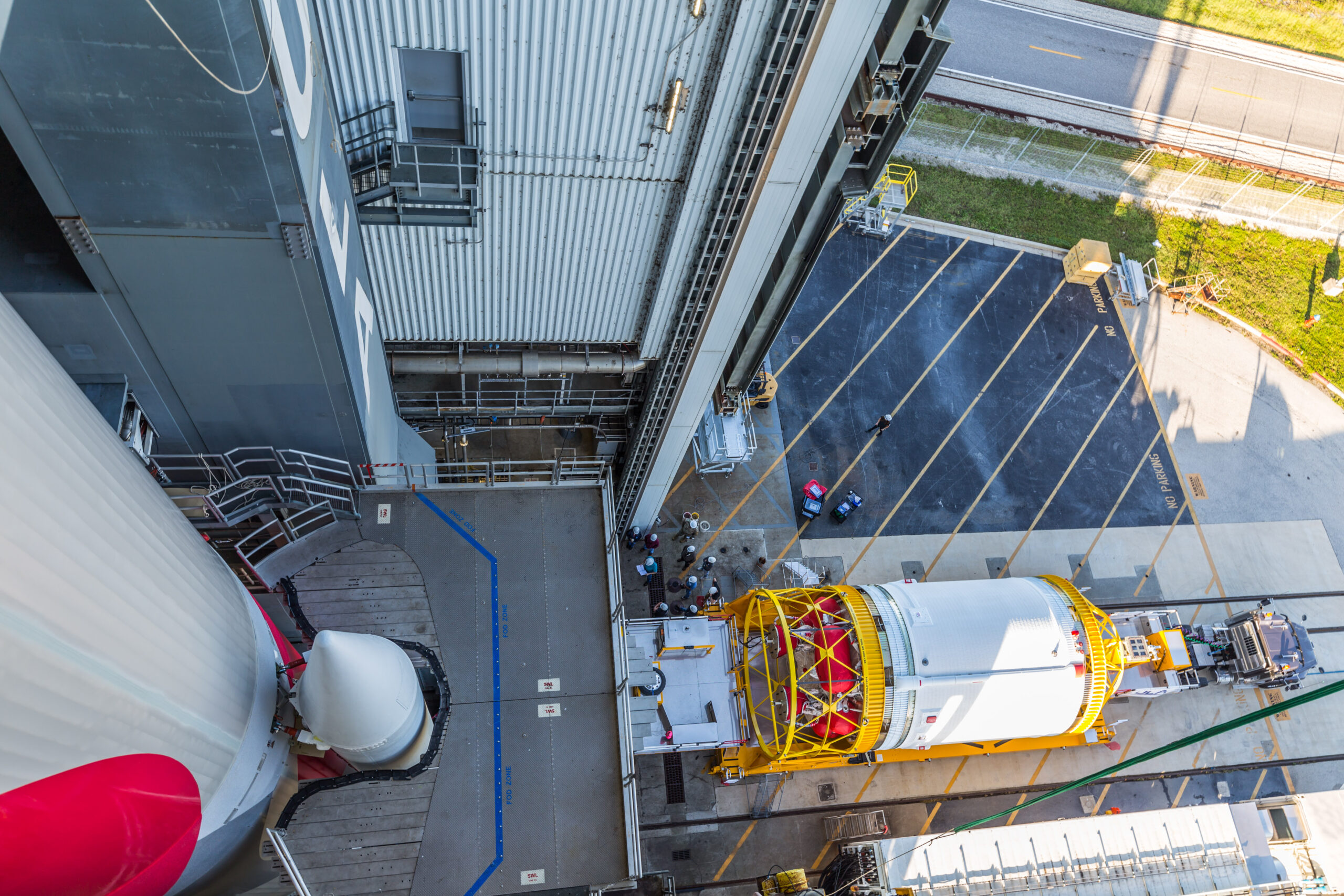
“We’re very pleased to be fulfilling with this mission a promise I made to Majel Barrett Roddenberry in 1997 that one day we would fly her and her husband…together on a deep-space memorial spaceflight,” said Celestis CEO Charles Chafer. “The mission is named Enterprise in tribute to them, and also fellow mission participant and beloved actor, James “Scotty” Doohan, as well as the many Star Trek fans who are joining them.”
“We are honored that Celestis has selected ULA to launch this important mission,” added Mr. Bruno after the January 2022 contract. “What a fitting tribute to the Roddenberry family and the Star Trek fans to be a part of the maiden flight of Vulcan.”
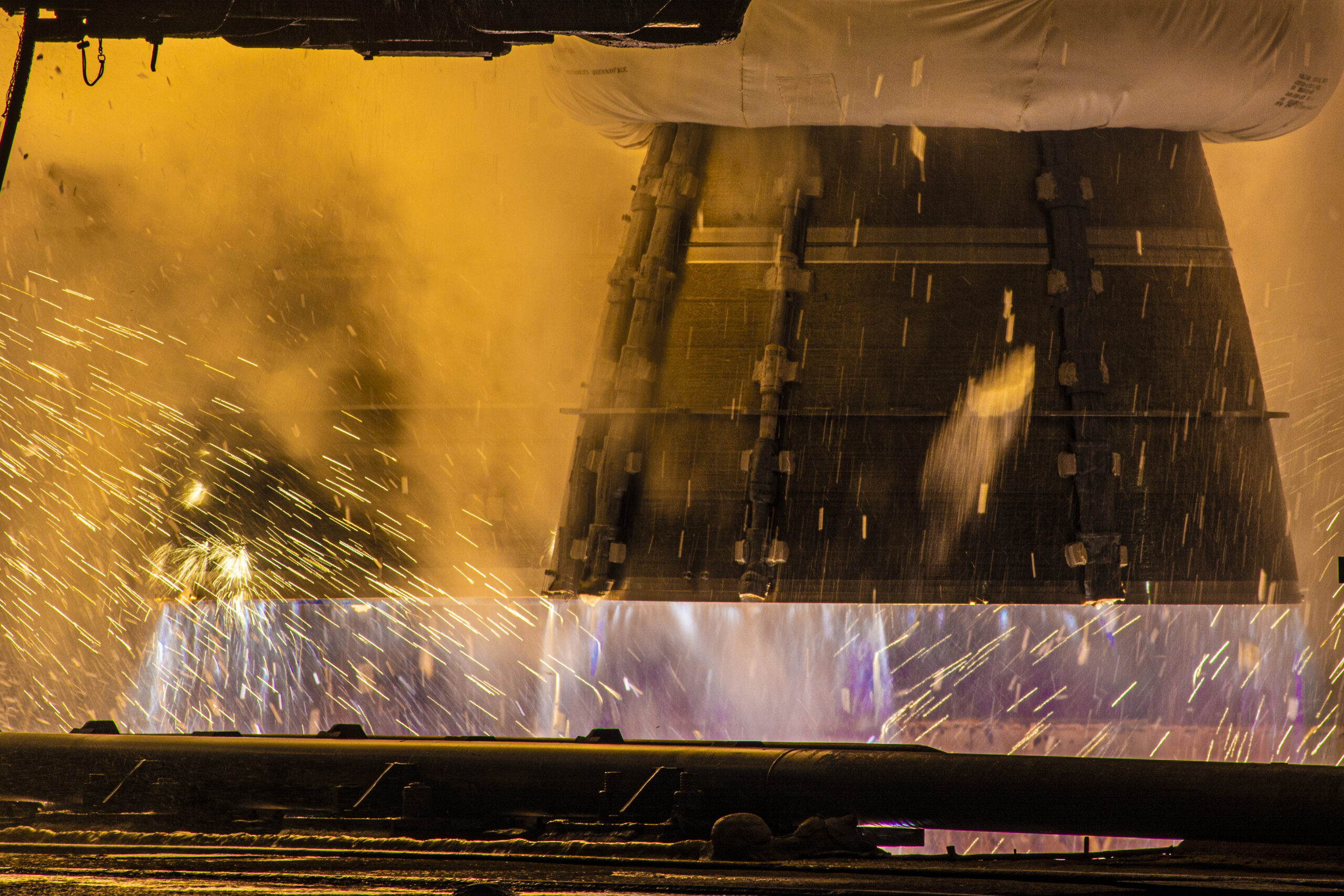
Five seconds prior to Monday’s liftoff, Vulcan-Centaur’s twin BE-4 engines, fueled by a mix of Liquefied Natural Gas (LNG) and liquid oxygen, will come alive with a combined thrust of 1.1 million pounds (500,000 kilograms). The twin GEM-63XL solid-fueled boosters will ignite with a staccato-like crackle at T-0 to power the Cert-1 mission airborne under a combined impulse of 2.1 million pounds (950,000 kilograms), exceeding the speed of sound a minute past launch and passing “Max Q”—the point of peak aerodynamic turbulence on the vehicle’s airframe—at T+76 seconds.
The twin boosters will be expended and jettisoned at 110 seconds into the flight, leaving the BE-4 engines alone to continue propelling the stack towards the edge of space, with Booster Engine Cutoff (BECO) timed a couple of seconds shy of five minutes after launch. Vulcan’s 109.2-foot-long (33.3-meter) core and the 38.5-foot-long (11.7-meter) Centaur V will part company, leaving the upper stage alone to execute three lengthy “burns” to emplace Peregrine into a highly elliptical orbit, more than 220,000 miles (360,000 kilometers) above Earth, and deliver the Enterprise Flight into deep space.
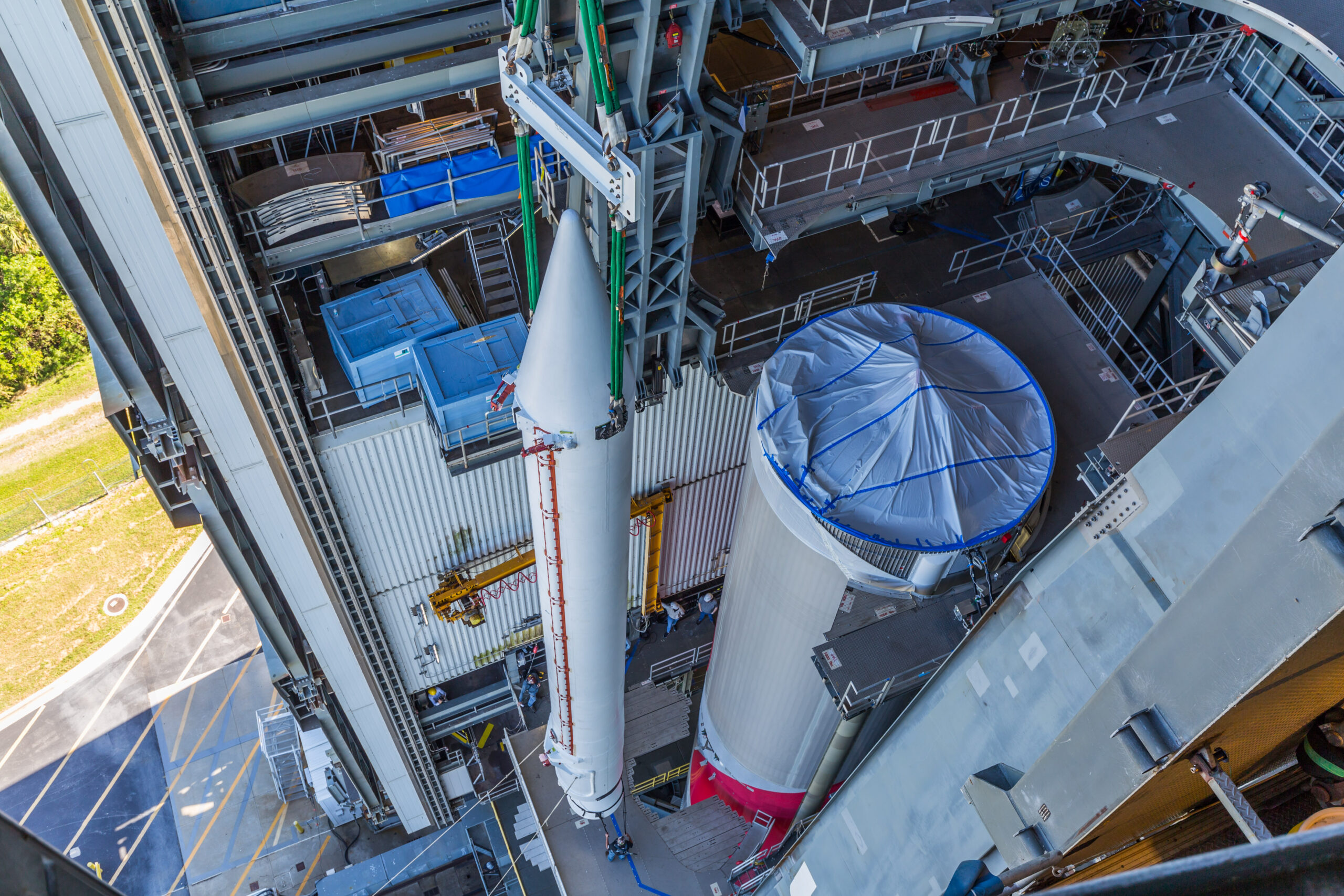
By this stage in the flight, the vehicle will weigh less than ten percent of what it did at liftoff. The Centaur V, which possesses 40 percent more endurance and 2.5 greater energy than ULA’s current in-service upper stages, will kick off the first burn of its RL-10 engines, lasting ten minutes and 31 seconds, shortly after separation from Vulcan’s core.
During the burn, the two-piece composite fairing will be discarded, exposing Peregrine to the harsh environment of space for the first time. After Main Engine Cutoff (MECO)-1, by which point the Centaur will be high above the mid-Atlantic Ocean, the stack will coast for 28 minutes, before the RL-10 engines ignite again, this time running for four minutes and two seconds to lift Peregrine into a TLI orbit.
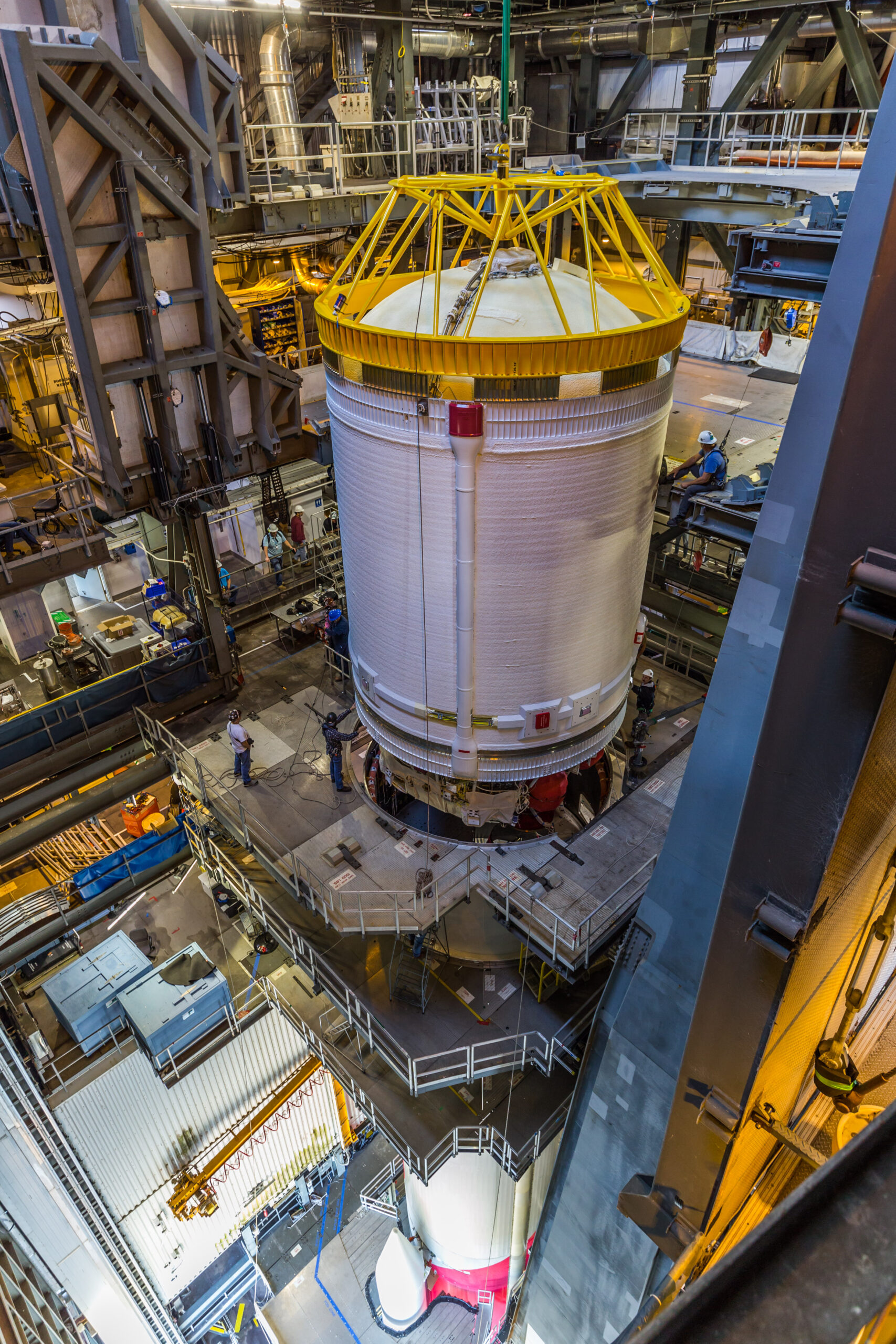
MECO-2 will take place at T+47 minutes and 37 seconds, with Peregrine expected to be deployed three minutes later high above the Indian Ocean at an altitude of 304 miles (490 kilometers), inclined 30.03 degrees. The lander is targeting touchdown on the Moon in February 2024. A final burn of the RL-10 engines, lasting 20 seconds, will end with MECO-3 at T+78 minutes, carrying Centaur V and Enterprise Flight into a long-lasting and stable solar orbit.




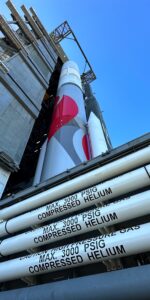
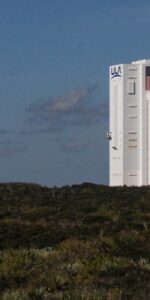
3 Comments
Leave a Reply3 Pings & Trackbacks
Pingback:Un razzo Vulcan trasporta nello spazio le ceneri delle celebrità di Star Trek - Trek Brazil
Pingback:Maiden Vulcan-Centaur Flies, Peregrine Lander Suffers Critical Anomaly - AmericaSpace
Pingback:Maiden Vulcan-Centaur Flies, Peregrine Lander Suffers Critical Anomaly - SPACERFIT